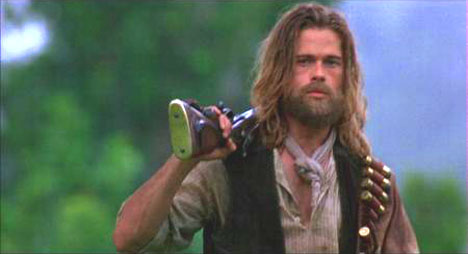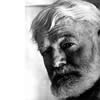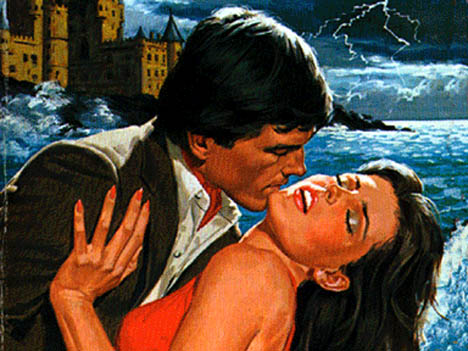
Manhood is in flux.
Until the 19th century and the beginning of the Women’s Suffrage movement, traditional gender definitions prevailed. But as women gradually claimed their share of political power, they were not content with the classic male-work-rational-strong vs. female-home-emotional-weak dichotomy that dominated — and of course they shouldn’t have been.
Men resisted the movement until they could do so no longer. As women took steps to define their own gender roles, men missed the opportunity to do the same. We were left with a confused, ragtag concept of what it means to be a man, defined not by ourselves, but rather by contrasting ideals from two sources — liberated women and posterity.But most modern men defy these narrow stereotypes, taking pieces of each. So without further ado, I now present to you...
The Male Scale
 1: John Wayne
1: John Wayne
The cowboy. Solitary, doesn’t need anyone else, but everyone else needs him to save the day. He is untethered by the world, an emotional Gibraltar. Therein lies his power, and his doom.
 2: James Bond
2: James Bond
Bond is…almost untrammeled. As a spy, he is defined by his one “weakness,” a desire to save the women who he encounters, and not solely for the sex. It is this chink in his armor, this mite of sensitivity in an environment where it could mean his death, that has made his image an echoing one.
 3: Hemingway
3: Hemingway
Hemingway would pretend to be Wayne, hunting and fishing and eschewing the women for the guys. For Chrissake, he got a special dispensation to hunt U-Boats in the Caribbean during WWII, which really just was him and his buddies getting drunk in pleasant waters. But his manliness, down to his nickname — Papa — was always a bit of trying too hard, always a dodge from the heavy emotions that consumed him. His characters were constantly hurt and refused to show it. He was the sensitive man who couldn’t bear to think it, so tried to cover it up with obscene displays to the contrary.
 4: Jason Bourne
4: Jason Bourne
As we reach the middle of the scale, Bourne is a twist on Bond. He has that something that many men crave, that surety that every other guy he sees, he can take in a fight. But he’s also a man in search of himself, haunted by his status as an assassin. If you choose to see it that way, he represents a drive towards self-awareness that few action heroes attempt.
 5: Harry Potter
5: Harry Potter
Harry isn’t the best wizard. He’s not the smartest. But he is the bravest. He alternates between brash actions that make you cheer cringe, and moments of self-doubt and emotional connection that, well, make you cheer and cringe. He is motivated by the desire to protect, but also for love and family. And, of course, he combats evil. It’s fitting, perhaps, that the balance is embodied in a child, who is less affected by the cultural ideas that can take root in the soul after so many years.
 6: Brad Pitt
6: Brad Pitt
Right, right. We all know he plays a badass Irish boxer, a secret agent, and Tyler Durden. But let's not forget roles like Tristan in Legends of the Fall. (Sure,Tristan was one of the Knights of the Round Table in Arthurian legend, but the name also means "sad"). And, since hooking up with Jolie, Pitt has actively been trying to change his image from sex symbol to humanitarian aid symbol. That Vanity Fair cover he got so upset about was said by some to be working against this new image.
 7: Barack Obama
7: Barack ObamaObama is a sensitive voter’s fantasy, hitting all the right notes of compassion and unity and hope. He lets us fantasize about the possibility of a President who isn’t a 1 or a 2 like most of those we’ve gotten over the years (particularly from the Republican party). Although he displays a strong chin, he is constantly criticized for his “lack of experience,†meaning his indecisiveness, lack of definitive policy, etc. In effect, he’s being criticized for not being more like Wayne or Bond.
 8: Anderson Cooper
8: Anderson Cooper
The compassionate anchor. Cooper vaunted into celebrity, of course, with his impassioned reporting from New Orleans during the Katrina disaster. He attracts viewers who want something beyond that dispassionate traditional approach, an anchor with whom they can connect emotionally. His stature, fine features, and blue blood are also not prototypically masculine, but are part of a package that a lot of people find appealing.
 9: Danny Tanner
9: Danny Tanner
On Full House, he was father and mother, teaching his children about emotions really more than anything else. He was respectable, the kind of dad a lot of people would want. Of course, that didn’t stop everyone from calling him gay to the point that Bob Saget wrote a hysterical song defending Tanner’s heterosexuality.
 10: Mr. Sensitive
10: Mr. Sensitive
Just to get the point across, I’m going with a caricature here. In the certifiably crappy movie Bedazzled (whose only redeeming feature was Liz Hurley in shifting, besequined outfits), Brendan Fraser for his wishes switches his personality around in an effort to win the heart of this one girl. At one point, he wishes to be “sensitive,” which just means that he starts crying over crap like the flight of a bird. The lesson I think we’re supposed to take away: some, or even a lot of sensitivity is good, but for God’s sake, be a man!
So now I ask you: is this scale accurate? Is it skewed in one direction or another? Where do prominent figures you know fall? (I think Bush is a 1.)
Ethan Todras-Whitehill is a freelance writer who covers technology, travel, and subcultures. He contributes regularly to The New York Times and several national magazines. He also blogs at crucialminutiae.com.See also:
The Scientific Laws of Romance
Nancy Drew's Sexy Secrets
Girls Are Geeks, Too
Why Chicks Don't Dig the Singularity
Top 5 Cartoon Hunks


 Yolanda is happy with the relationship, but she’s starting to want more. Her CD is starting to shrink, but she does not sense the same happening with Howard. So she begins to Pull (III) on Howard’s CD, dropping hints about rings and babies and puppies. She begins buying toothbrushes and storing them in random nooks of Howard’s house. Howard notices this behavior, and subconsciously begins to push back, trying to lengthen Yolanda’s CD to match his own. He stops returning her calls as quickly and leaves copies of Playboy out in his bathroom. (See Fig. 1.)
Yolanda is happy with the relationship, but she’s starting to want more. Her CD is starting to shrink, but she does not sense the same happening with Howard. So she begins to Pull (III) on Howard’s CD, dropping hints about rings and babies and puppies. She begins buying toothbrushes and storing them in random nooks of Howard’s house. Howard notices this behavior, and subconsciously begins to push back, trying to lengthen Yolanda’s CD to match his own. He stops returning her calls as quickly and leaves copies of Playboy out in his bathroom. (See Fig. 1.)